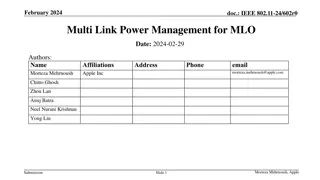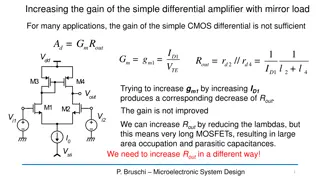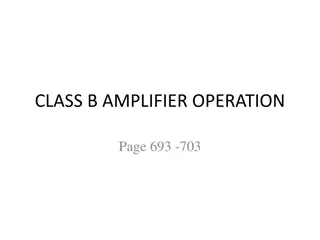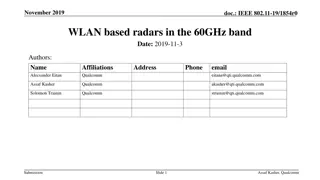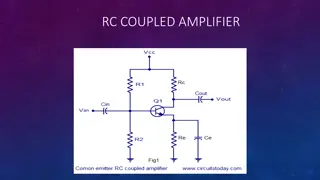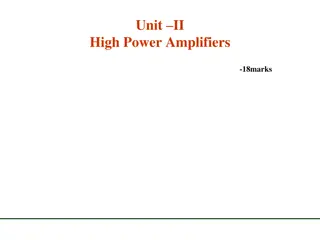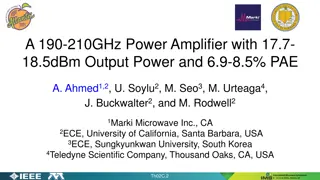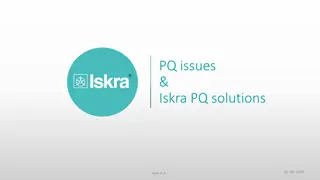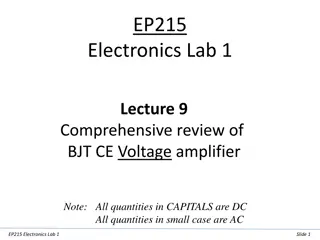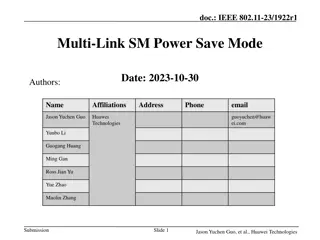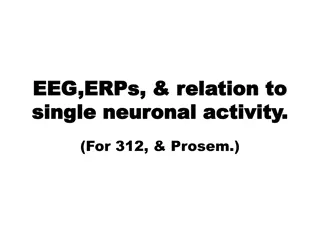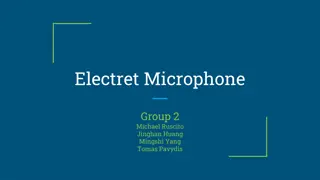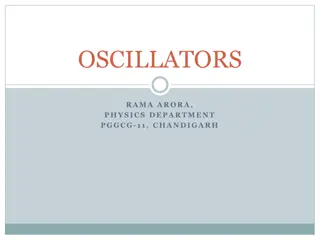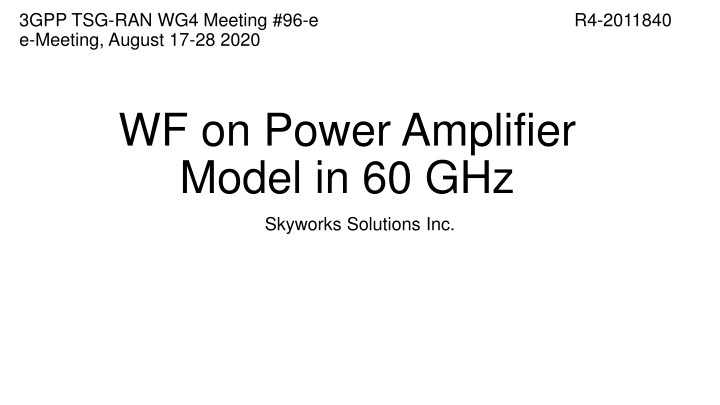
Power Amplifier Models for 60 GHz in 3GPP TSG-RAN WG4 Meeting
Explore discussions on potential UE PA models valid for the 52.6 to 71 GHz range in the 3GPP TSG-RAN WG4 Meeting. Companies provide views on PA modeling, memory effects, and UE aspects for MPR/A-MPR evaluation. Considerations include IQ and DC impairments, OOB emissions, antenna assumptions, and beamforming errors. Reference documents R4-2009757 and R4-2009921 offer insights into phase noise, key technology considerations, and specifications for the 52-71 GHz range.
Download Presentation

Please find below an Image/Link to download the presentation.
The content on the website is provided AS IS for your information and personal use only. It may not be sold, licensed, or shared on other websites without obtaining consent from the author. If you encounter any issues during the download, it is possible that the publisher has removed the file from their server.
You are allowed to download the files provided on this website for personal or commercial use, subject to the condition that they are used lawfully. All files are the property of their respective owners.
The content on the website is provided AS IS for your information and personal use only. It may not be sold, licensed, or shared on other websites without obtaining consent from the author.
E N D
Presentation Transcript
3GPP TSG-RAN WG4 Meeting #96-e e-Meeting, August 17-28 2020 R4-2011840 WF on Power Amplifier Model in 60 GHz Skyworks Solutions Inc.
Background Many companies provided their view [1-5] on potential UE PA models valid for 52.6 to 71 GHz range. There is general agreement that: PA model including Rapp is not needed for RAN1 work and that there is no agreed RAN4 parameters for a PA model PA model choice is left to the companies for RAN4 work but that study of Rapp, IEEE (Rapp also) or other types of models can be done during the SI There is no agreement in RAN4 about PA models covering memory effects but in some cases measurements are needed to verify the behavior especially when there are tight emission requirements due to higher order IMDs
WF on UE PA model for RAN4 For FR2 Rapp or AM/PM (simulated/measured curves) or even measurements have been used in RAN4, and they can be can be used for 52.6-71GHz range MPR/A-MPR evaluation Other models are not precluded, including assessment on impact of memory effect When presenting results companies should clarify which model is used, how it has been calibrated and discuss potential limitations In absence of fixed requirement in 52.6-71GHz range, FR2 calibration waveform and MPR can be used as the basis for comparison. This can also be used to compare technology capability.
WF on other UE aspects for MPR/A-MPR Beyond the intrinsic PA performance and its modeling, other aspects should be considered: IQ and DC impairments and their impact to IBE and EVM, and via intermodulation of those with the wanted signal, OOB emissions Assumption on number of antennas and beam forming errors (phase shift errors and/or PA to PA pulling) have an influence on how to calibrate the PA output power and margin needed for a given EIRP and emission requirement Companies are encouraged to provide their view on feasible DC and IQ impairments in the 52.6 to 71 GHz range and report these assumption when providing results. Companies are encouraged to provide their view on practical number of antennas and beamforming errors in the 52.6 to 71 GHz range and report these assumption when providing results.
References [1] R4-2009757 On phase noise and PA models in 52.6 71 GHz, Intel Corporation [2] R4-2009921 Key technology considerations relating to 52-71GHz specification work, Ericsson [3] R4-2009946 Initial considerations on 60 GHz PN and PA models, Apple Inc. [4] R4-2010292 Discussion on RF impairments for B52.6G, vivo [5] R4-2011494 On PN model for 52.6~71GHz, Huawei, HiSilicon


